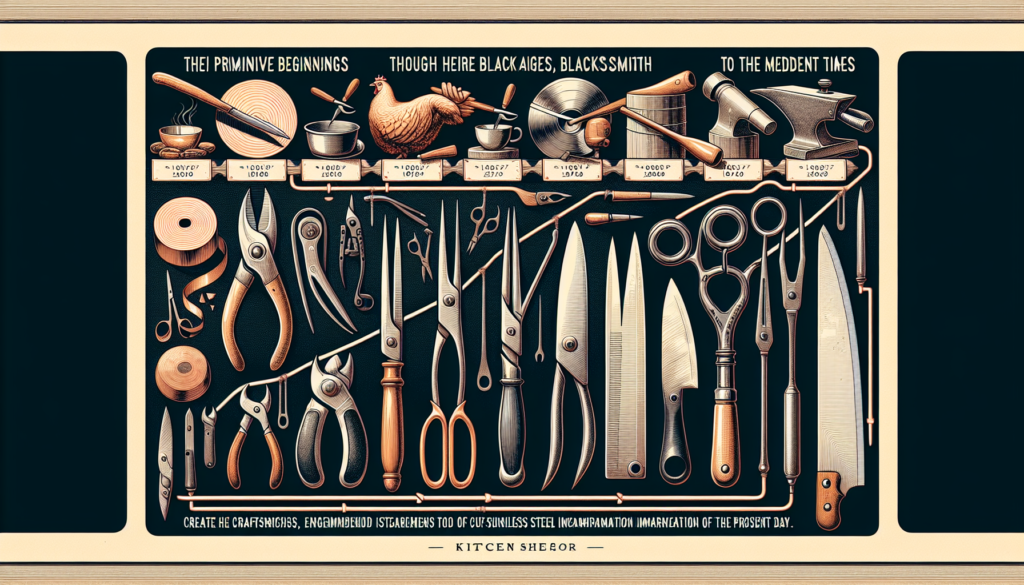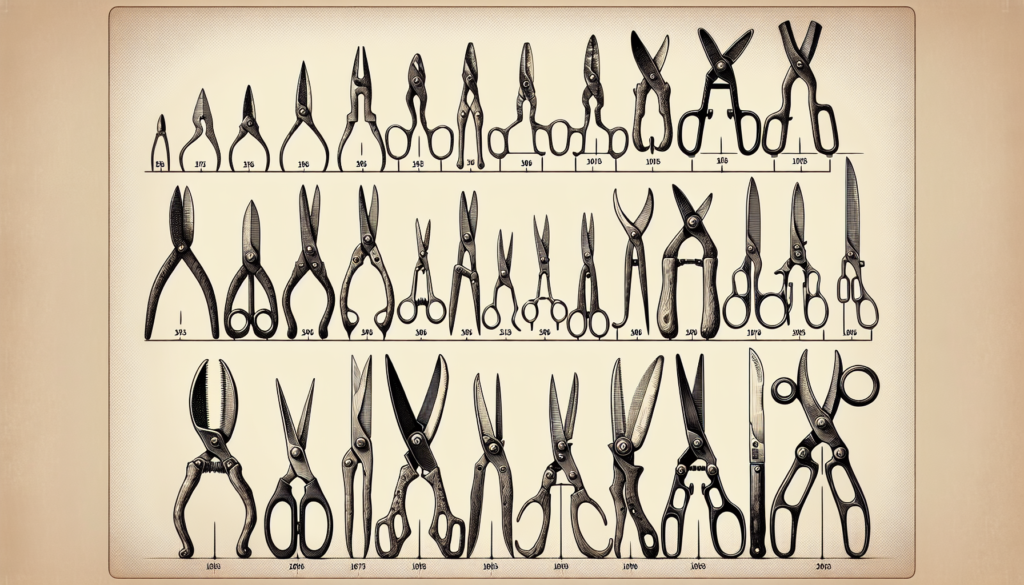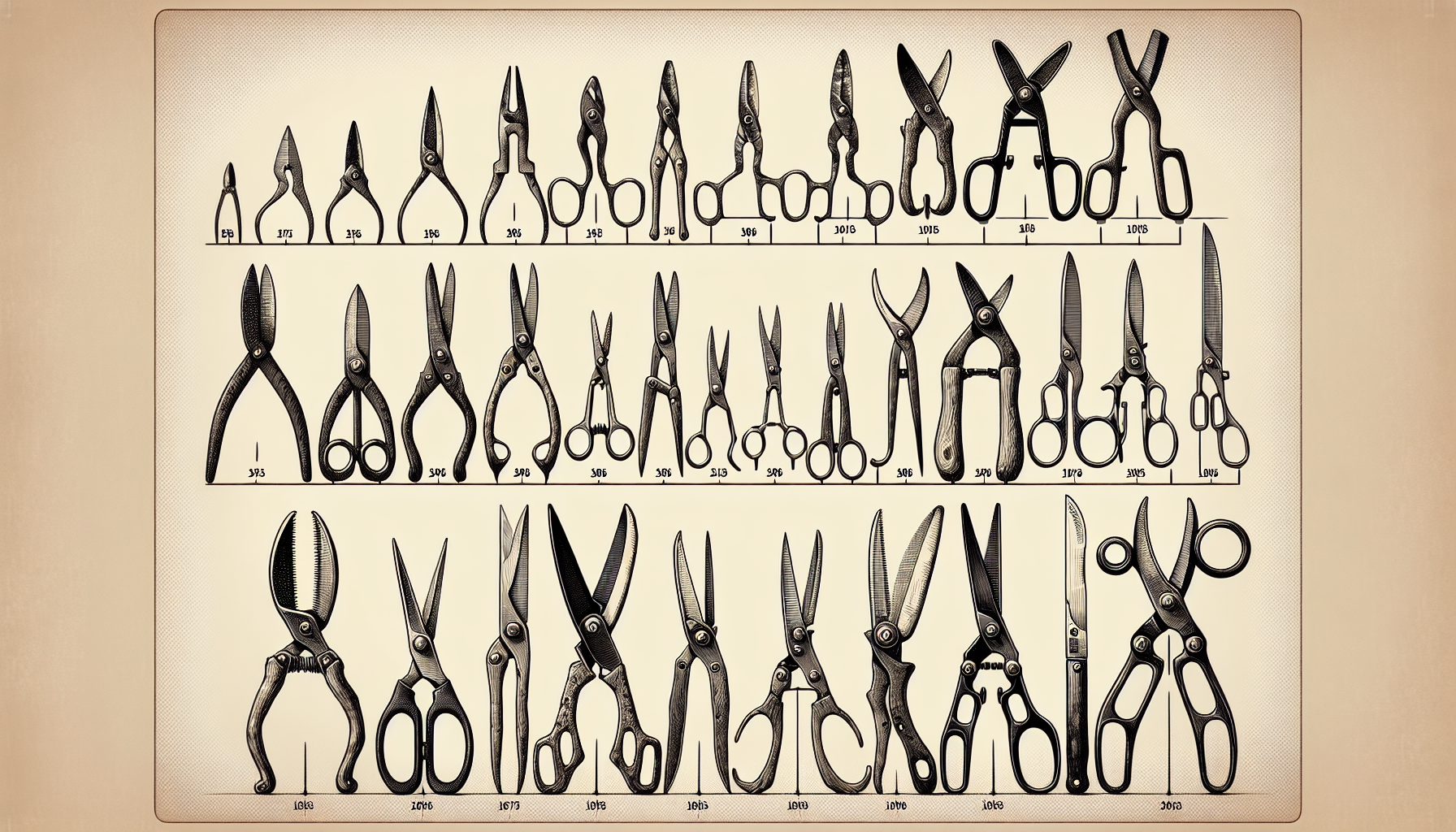The History Of Kitchen Shears: From Inception To Modern Day
Have you ever wondered about the origins and evolution of the versatile kitchen tool we know as kitchen shears? From their humble beginnings to their modern-day advancements, the history of kitchen shears is an intriguing tale of innovation and practicality. In this article, we will take a journey through time to explore how these indispensable utensils have emerged and transformed, playing an essential role in the culinary world. Get ready to gain a newfound appreciation for the convenient companion that resides in your kitchen drawer!

Ancient Origins
Throughout history, kitchen shears have played a vital role in food preparation and other tasks. The early uses of these versatile tools can be traced back to ancient times when scissors were first invented.
Early uses of kitchen shears
In various ancient civilizations, kitchen shears were used not only for cooking but also for a wide range of daily activities. From cutting herbs and vegetables to snipping flowers and trimming clothes, these primitive shears served as a multi-purpose tool for the people of those times.
Development in different cultures
As different cultures evolved, so did the design and functionality of kitchen shears. In ancient Rome, for example, these shears were made primarily from bronze and were known for their robust construction. In China, kitchen shears were often crafted out of steel and were used extensively in culinary practices, such as slicing through poultry and seafood.
Invention of Modern Kitchen Shears
The invention of modern kitchen shears can be attributed to several innovations during the 18th and 19th centuries.
Innovation of the pivot joint
One crucial development was the introduction of a pivot joint in the design of kitchen shears. This pivot joint allowed for smooth and controlled cutting, significantly improving the functionality of these shears. It also enabled the blades to be easily separated for thorough cleaning, making maintenance much simpler for users.
Emergence of specialized models
During this time, specialized models of kitchen shears started to emerge. For instance, poultry shears were engineered with stronger and more robust blades to handle the demands of cutting through tough poultry bones. Other models were designed specifically for tasks like cutting herbs, vegetables, or even delicate pastry.
Industrial Revolution and Mass Production
The industrial revolution brought significant advancements to the manufacturing processes and materials used in kitchen shear production.
Use of steel in production
With the advent of the industrial revolution, the production of kitchen shears shifted towards utilizing steel as the primary material. Steel offered enhanced durability and a sharper cutting edge, ensuring that kitchen shears could tackle even more demanding tasks.
Advancements in manufacturing processes
The industrial revolution also allowed for mass production techniques, making kitchen shears more accessible to the general public. This mass production reduced costs and increased availability, allowing households around the world to benefit from the functionality these shears provided.
Kitchen Shears in the 20th Century
The 20th century brought further advancements in the design and features of kitchen shears.
Integration of new materials
During this time, kitchen shears started incorporating new materials into their construction. Plastic handles became popular due to their lightweight and comfortable grip, while stainless steel continued to dominate the blade’s composition for its durability and corrosion resistance.
Design improvements
Design improvements were also prevalent in the 20th century. Manufacturers began creating shears with more ergonomic handles, ensuring comfort and reducing hand fatigue during extended use. Additionally, features such as built-in bottle openers and nutcrackers were added, enhancing the versatility of these shears.

Evolution of Kitchen Shears’ Features
Over time, the features of kitchen shears have continued to evolve, meeting the needs of various users.
Different handle designs
Today, kitchen shears come in a wide variety of handle designs to cater to different preferences and tasks. Some may prefer traditional straight handles for a classic feel, while others may opt for offset handles to provide better leverage and control. Ultimately, the various handle designs aim to offer optimum comfort and ease of use.
Serrated edges for enhanced grip
Serrated edges have also become a popular feature in modern kitchen shears. These serrations provide additional grip when cutting through tougher materials, ensuring that the shears maintain a firm hold on the object being cut. This enhanced grip allows for more precise and controlled cutting, making kitchen shears even more versatile in their application.
Applications Beyond the Kitchen
While originally designed for culinary purposes, kitchen shears have found applications beyond the kitchen in various industries.
Use in medical and veterinary fields
In the medical and veterinary fields, kitchen shears are often utilized for surgical and clinical procedures. Their sharp blades and precise cutting action make them invaluable tools for professionals who need to perform delicate and intricate tasks.
Outdoor and survival applications
Kitchen shears have also found a place in outdoor and survival settings. Their durability and versatility make them ideal for cutting through ropes, opening packages, and even preparing food while camping or engaging in other outdoor activities.
Kitchen Shears in the Modern Era
In the modern era, kitchen shears have continued to evolve to provide improved functionality and user experience.
Ergonomic designs for comfort
Many modern kitchen shears feature ergonomic designs that prioritize user comfort. Manufacturers have experimented with various grip patterns and handle shapes to reduce hand fatigue and provide a comfortable cutting experience. Additionally, adjustable tension screws have been introduced to allow users to customize the shears’ cutting force to suit their preferences.
High-quality materials and craftsmanship
Kitchen shears nowadays are often crafted with high-quality materials, such as forged stainless steel and carbon steel, to ensure durability and longevity. Furthermore, advancements in manufacturing techniques, such as laser cutting and precision grinding, have resulted in blades that are exceptional in their sharpness and performance.
Specialized Kitchen Shears
In addition to general-purpose kitchen shears, specialized models have become popular for specific tasks.
Poultry shears for butchering
Poultry shears are designed specifically for butchering poultry, offering strength and precision to cut through bones and joints. Equipped with a robust fulcrum and extra-sharp blades, these shears make quick work of deboning and preparing poultry for cooking.
Herb scissors for precision cutting
Herb scissors feature multiple blades with sharp edges in a comb-like pattern. This unique design allows for simultaneous cutting of several strands of herbs, providing quick and precise cuts. Herb scissors minimize the risk of bruising or damaging delicate herbs, maintaining their flavor and appearance.
Safety and Maintenance
Proper handling and maintenance are essential to ensure the longevity and safe usage of kitchen shears.
Proper handling and storage
It is crucial to handle kitchen shears with care, ensuring that they are not dropped or mishandled, as this can lead to damage or injury. Furthermore, storing shears in a safe and secure place, such as a dedicated drawer or knife block, helps prevent accidents and maintains blade sharpness.
Cleaning and sharpening
Regular cleaning and sharpening are vital to keep kitchen shears in optimal condition. Cleaning after use, especially for shears that come into contact with food, prevents the buildup of debris or bacteria. Sharpening the blades regularly ensures that the shears maintain their cutting effectiveness and usability.
Conclusion
From their humble beginnings in ancient times to the modern innovations seen today, kitchen shears have proven to be an indispensable tool in countless households and industries. The enduring utility of these shears demonstrates their importance in food preparation and beyond. As technologies continue to advance, there are bound to be future innovations and possibilities that will further enhance the functionality and versatility of kitchen shears to meet the ever-changing needs of users.

